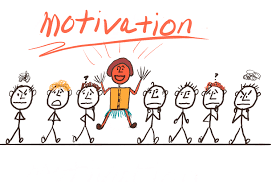MOTIVATION, the key to successful learning and teaching
Motivation is one of the key factors in language learning and language teaching. As J. Harmer points out, "the motivation students bring to class [whether intrinsic or extrinsic] is the biggest single factor affecting their success." There are aspects that are considered to have the power to enhance or deter students' motivation. Among these internal factors it is worth mentioning intelligence, aptitude, attitude, perseverance, learning strategies and self-evaluation; among the factors escaping students' possibilities, physical surroundings (classroom, school), method employed by the teacher and teacher's personality.
Students who
are intrinsically motivated are bound to succeed whatever the situation. Those
who do not have such motivation can equally succeed in second language learning
if the circumstances in which they are studying are favourable. This is why and whatever the teacher does inside the
classroom is of vital importance in determining their attitude towards the
language.
As discussed in a previous post, Ausubel pointed out that all human beings are moved by six inner drives
that construct motivation. These desires are exploration, manipulation, mental and physical activity, stimulation,
ego enhancement and knowledge. As
teachers, we can -and must- create these needs in our students, and much of
their success in learning and our success in teaching will depend on that. Let's remember those inner needs:
·
exploration: this refers to the need of probing the unknown; therefore, as
teacher we must create expectations on the subject matter we are going to deal
with. We can also make students explore their own body of knowledge, helping
them retrieve the information stored in their LTM into their STM, so that this
information is available and ready to be used. Warm-ups are the best activities
because through them students not only activate systemic knowledge but also
background knowledge or knowledge of the world.
·
manipulation: this need involves some kind of change in the environment,
change of position or the actual handling of concrete material. Students
feel really motivated when they break rows and
sit on the floor and they cut and
glue down figures, manipulate puppets or go to the front and group a series of
objects.
·
activity: 1- mental activity: it
requires thinking, reasoning; it involves cognitively demanding activities in
which students have to discover, realize about different things. It has to be
provided in the appropriate amount so as not to discourage students. A way of
introducing mental activity is by some sort of problem to be solved. The use of comprehensible
input by the teacher is also challenging for students.
2- physical activity: in this kind of activity, students work with their body without changing the environment, for example students their body according to what a song says.
·
stimulation: by this it is meant that students need to feel engaged in
activities in which they are interested, stimulated by the environment, by
other people, by ideas, thoughts and feelings. Children of different ages are
stimulated by different things, and it is the teacher's job to finds out what
is that motivate each of them.
· ego enhancement: this is the desire to be recognized and accepted by both, the teacher and peers. Good relationships inside the classroom are of vital importance for the life of each lesson, ans the three institutions showed a general aura of respect and companionship. It is important, too, that all students know they are a key person, and that everything they bring to class has enormous value. Feedback plays a vital role for this inner drive. As Harmer points out, “one of the keys to successful learning is the feedback that a learner receives from others.” Those teachers who provide positive affective feedback encourage students to participate.
Student’s ego obviously enhanced when they bring something new to the class, or when they express their own views. In the three schools, all students’ ideas were respected and approved.
· knowledge: it represents a process of acquisition and internalization that always comes as a result of one -or more- of the previously mentioned needs. In other words, students can learn from every single experience inside the classroom and this shows the importance of motivating them. Besides, we must always take into account children’s capacity for indirect learning so as to make them profit from all the activities carried out in class.
We shouldn't forget that the conditions in which learning takes place are very influential on motivational aspects. Factors such as light, heat or fresh air, noise, quantity of students, space available, among others prove to be a draw-back for motivation. However, the environment can be much more pleasant when students are surrounded by posters, drawings and productions of their own. But what happens when we are not present in the same classroom? How do we raise levels of motivation when we share our lessons through the screen? We might wonder, is motivation enough?
I'd love to read your opinion.



Comments
Post a Comment